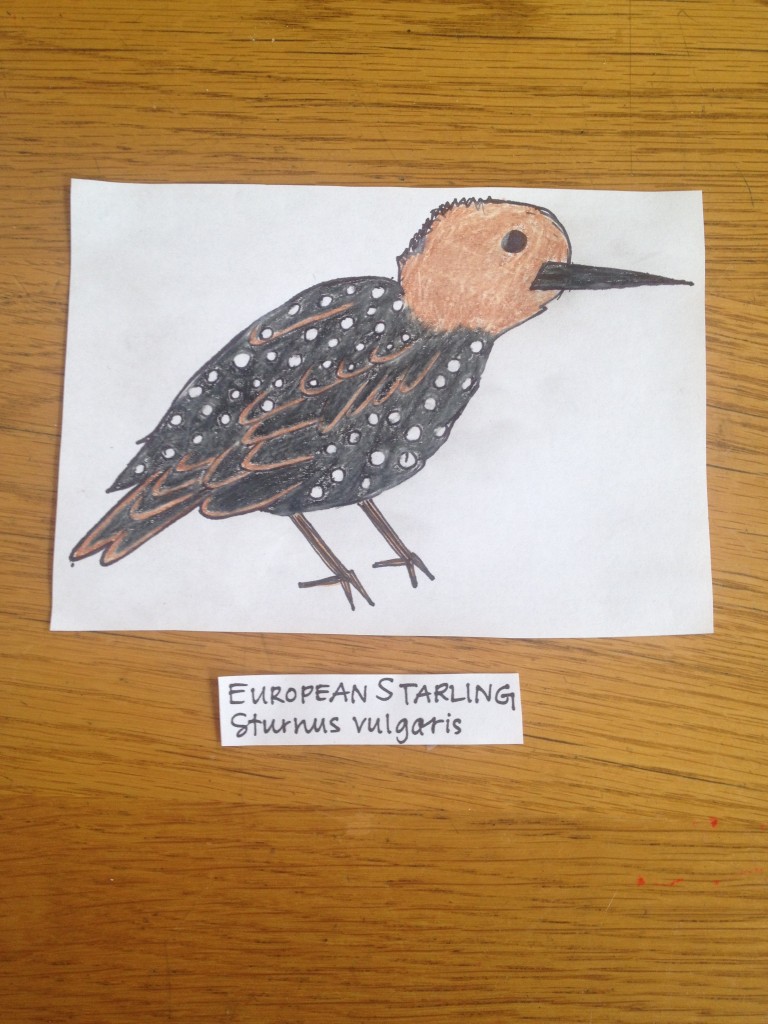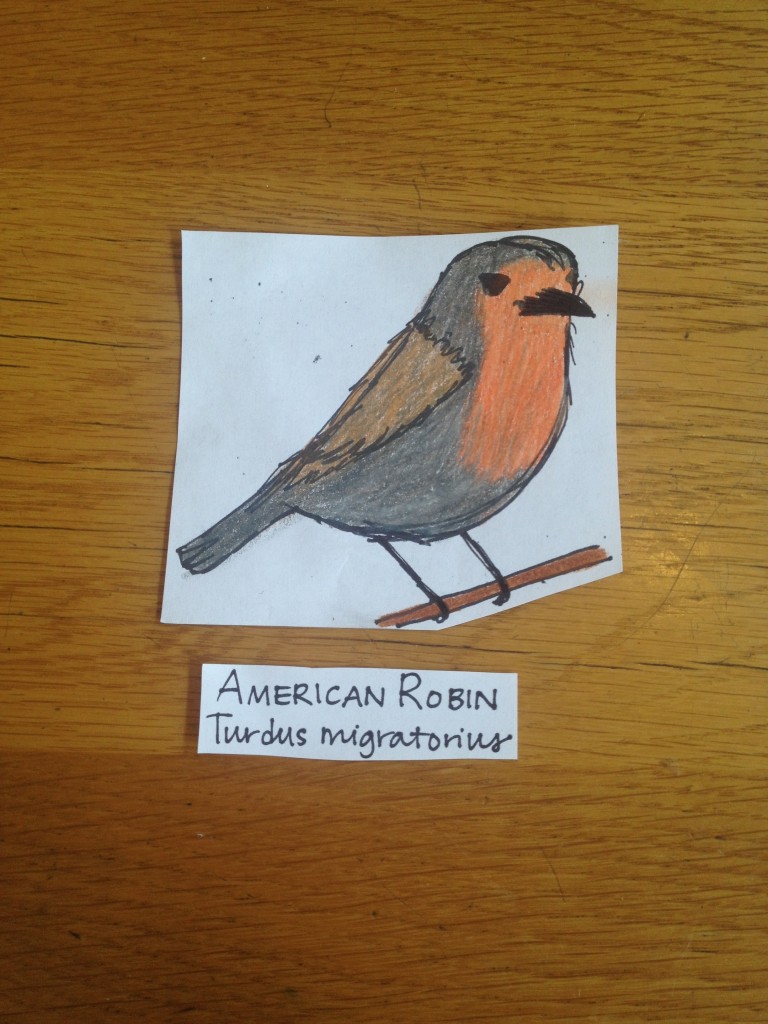 Medium: colored pencil
Medium: colored pencil
The epic poem the Conference of the Birds details the journey of several birds in their search to find and select a king. Before the journey begins, the hoopoe bird must first convince the other birds to participate, as they are initially hesitant to believe they need a king. For my creative response this week, I chose to translate this scene to a Harvard context: if Harvard students were approached to join a search for the Simorgh, what would they say? I chose three aspects of life at Harvard that students might easily find themselves obsessed with, and I created three imaginary birds who have taken one of these parts of Harvard life too far. A hypothetical bird who is obsessed with one very specific part of campus life would be uninterested in the search for Simorgh. I ascribed these obsessions to three birds common to this area.

In the Conference of the Birds, the nightingale tells the hoopoe that he is “completely drowned in the ocean of love” and does not have time to look for Simorgh. This reminded me of the feeling of being “completely drowned” in responsibilities for their extracurricular activities, so I imagined a student who prioritizes clubs over all else. This bird would find it difficult to spare a single minute outside of meetings, performances, and activities to go to class—much less to look for Simorgh. I chose the European starling (Sturnus vulgaris) as the Cambridge analog of the nightingale because it is highly gregarious, just like students who are very involved in extracurriculars. Starlings are known for the beautiful flight patterns of large and incredibly tightly packed flocks, which reminded me of the close-knit and idiosyncratic social aspects of many extracurriculars at Harvard.
 The partridge in the story has determined that jewels are the only permanent wealth and so wants only to acquire and protect his different gemstones. This reminded me of the feeling of being obsessed with one’s letter grades. There can be something tempting about protecting the sanctity of a very good transcript, so I imagined a bird who has taken conscientiousness to an unhealthy level. This bird would not take a certain class that they are interested in because it is reputedly difficult or would take a class they are not invested in simply because it is purportedly graded easily. This bird would be so paralyzed with obsession over GPA that they would not agree to leave campus to look for Simorgh. For the Cambridge analog of the partridge, I chose the American robin (Turdus migratorius), because it is friendly in the summer but remarkably anti-social in the winter.
The partridge in the story has determined that jewels are the only permanent wealth and so wants only to acquire and protect his different gemstones. This reminded me of the feeling of being obsessed with one’s letter grades. There can be something tempting about protecting the sanctity of a very good transcript, so I imagined a bird who has taken conscientiousness to an unhealthy level. This bird would not take a certain class that they are interested in because it is reputedly difficult or would take a class they are not invested in simply because it is purportedly graded easily. This bird would be so paralyzed with obsession over GPA that they would not agree to leave campus to look for Simorgh. For the Cambridge analog of the partridge, I chose the American robin (Turdus migratorius), because it is friendly in the summer but remarkably anti-social in the winter.

In the Conference of the Birds, the homa thinks his relationship to the royalty of Persia makes him too important to look for Simorgh. The social scene at Harvard can be trick to navigate; I imagined a bird who has found a place for himself within the social scene that is he is so satisfied with that he does not think he should be required to look for Simorgh with the others. For the Cambridge analog of the homa, I chose the common grackle (Quiscalus quiscula), because it is strikingly beautiful and very territorial.
Attar, Conference of the Birds, trans. A. Darbandi and D. Davies
